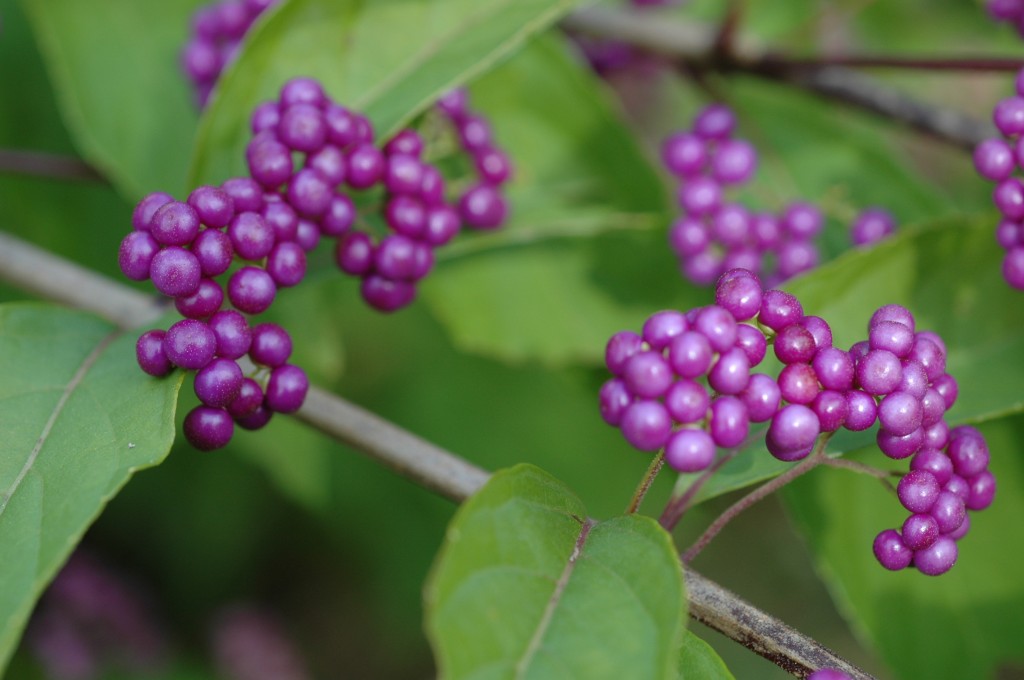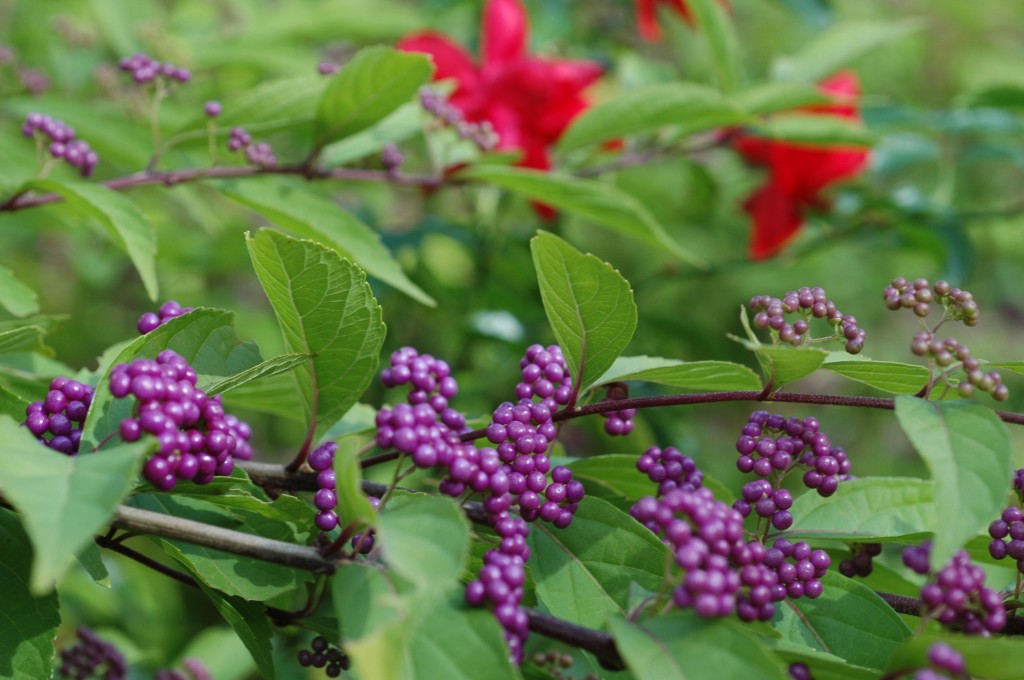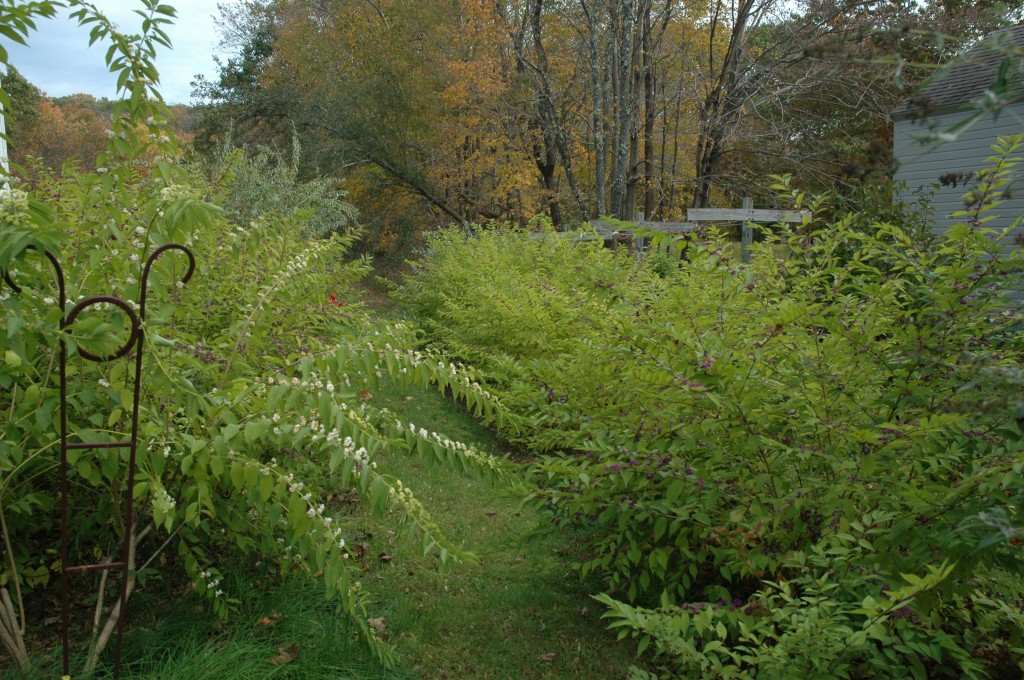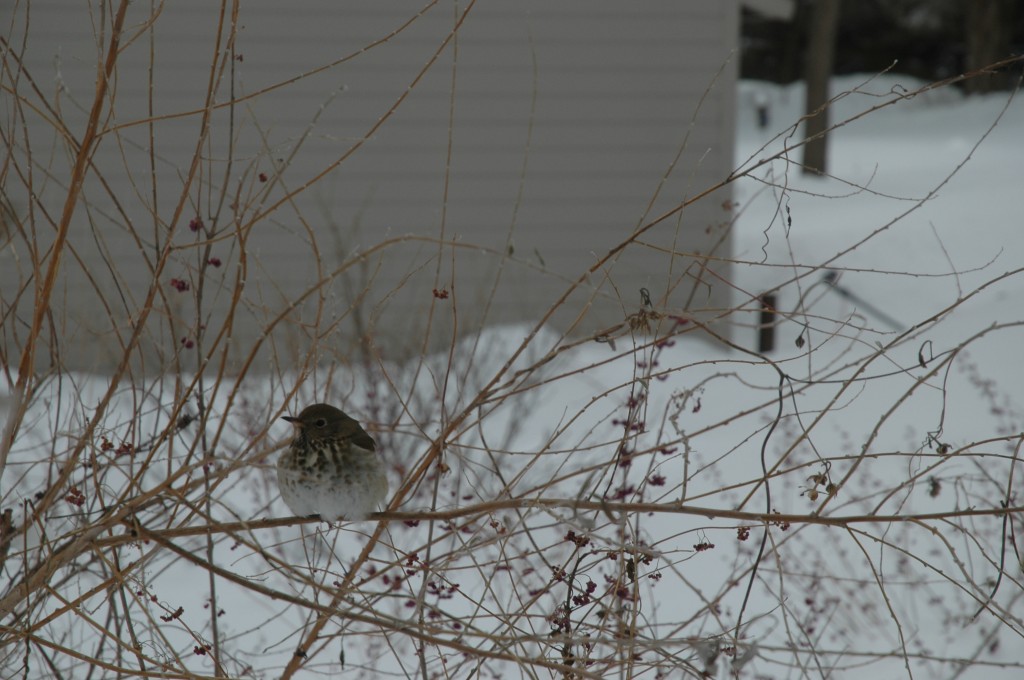 I’m not the weepy type. No sir, to me. Besides misting over whenever I hear the Mary Poppins version of “Feed the Birds Tuppence a Bag”, sobbing over The Velveteen Rabbit (that’s a children’s book?), and blubbering inconsolably whenever I see a Santa (what’s that all about anyway?), I maintain a stiff upper lip. Big girls don’t cry. But I’ve got to say, the callicarpa had my stoic lip quivering. Having waited a whole year in anticipation of those lilac-colored berries to form, seeing the branches strewn from here to Kansas was almost more than I could handle.
I’m not the weepy type. No sir, to me. Besides misting over whenever I hear the Mary Poppins version of “Feed the Birds Tuppence a Bag”, sobbing over The Velveteen Rabbit (that’s a children’s book?), and blubbering inconsolably whenever I see a Santa (what’s that all about anyway?), I maintain a stiff upper lip. Big girls don’t cry. But I’ve got to say, the callicarpa had my stoic lip quivering. Having waited a whole year in anticipation of those lilac-colored berries to form, seeing the branches strewn from here to Kansas was almost more than I could handle.
 For anyone who hasn’t been following this feed, let me help you catch up. I’m still harping on the freak October snowstorm and its reign of terror. Actually, the callicarpas will survive just fine. Despite the fact that they’re shredded, the shrubs will live (theoretically) to produce berries next year. And the callicarpas would normally be a big part of the excitement right about now. Years ago, I installed a double callicarpa allee running down the side of my house. Originally, it was a double hollyhock allee which became Connecticut’s version of the rust belt. I never looked back when I dug them up. Except for early spring when they don’t break dormancy as rapidly as one would like, the callicarpa allee is pretty much a continual source of delight.
For anyone who hasn’t been following this feed, let me help you catch up. I’m still harping on the freak October snowstorm and its reign of terror. Actually, the callicarpas will survive just fine. Despite the fact that they’re shredded, the shrubs will live (theoretically) to produce berries next year. And the callicarpas would normally be a big part of the excitement right about now. Years ago, I installed a double callicarpa allee running down the side of my house. Originally, it was a double hollyhock allee which became Connecticut’s version of the rust belt. I never looked back when I dug them up. Except for early spring when they don’t break dormancy as rapidly as one would like, the callicarpa allee is pretty much a continual source of delight.
 Although I experimented with ‘Issai’, ‘Duet’ (a variegated version), C. bodinieri ‘Profusion’ and ‘Alba’, I found ‘Early Amethyst’ to be superior on all fronts. It has a graceful, lacy form with branches stacked up like a series of tutus. All lined up in an allee, it’s a choreographer’s dream. Think Swan Lake. It has no foes (yet), it gets no blights (yet), and deer could care less (so far). The tiny pink blossoms glisten like diamonds in the summer sun and, in a normal year, the berry load is the talk of the town starting in September on ‘Early Amethyst’. Since their branches are strewn hither and yon, I guess I’ll just get a jump on spring cleaning and cut them back to the main stems. So far, they’ve remained sharp and tight due to the prune-back (usually performed in spring). And also thanks to the annual shearing, they don’t break apart despite the berry load.
Although I experimented with ‘Issai’, ‘Duet’ (a variegated version), C. bodinieri ‘Profusion’ and ‘Alba’, I found ‘Early Amethyst’ to be superior on all fronts. It has a graceful, lacy form with branches stacked up like a series of tutus. All lined up in an allee, it’s a choreographer’s dream. Think Swan Lake. It has no foes (yet), it gets no blights (yet), and deer could care less (so far). The tiny pink blossoms glisten like diamonds in the summer sun and, in a normal year, the berry load is the talk of the town starting in September on ‘Early Amethyst’. Since their branches are strewn hither and yon, I guess I’ll just get a jump on spring cleaning and cut them back to the main stems. So far, they’ve remained sharp and tight due to the prune-back (usually performed in spring). And also thanks to the annual shearing, they don’t break apart despite the berry load.
I promise. This will be the last blog whining about the storm. After all, our disaster was mild compared to Michael Phillips of Lost Nation Orchard. I just heard him lecture at the Berkshire Botanical Garden yesterday and his entire apple crop was knocked off in a hail storm last year. If you ever have opportunity to hear Michael lecture on his holistic orchard practices, don’t miss it. He’s awesome. Held a full room transfixed for 3 hours.

